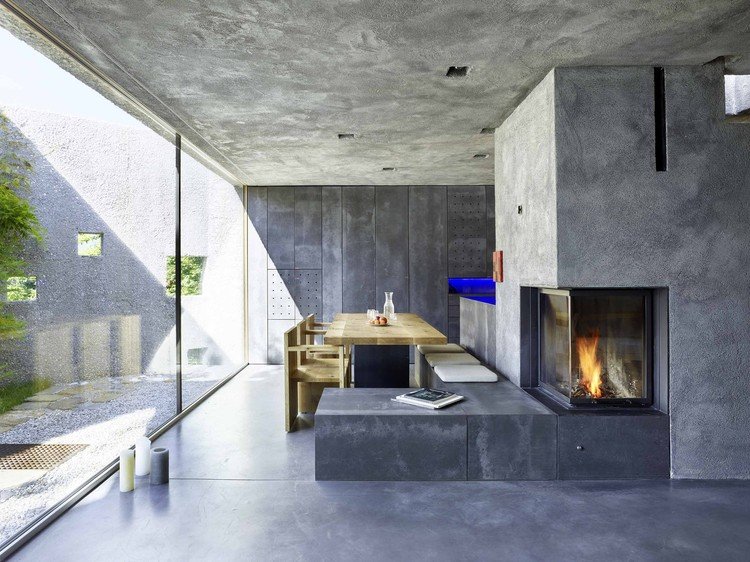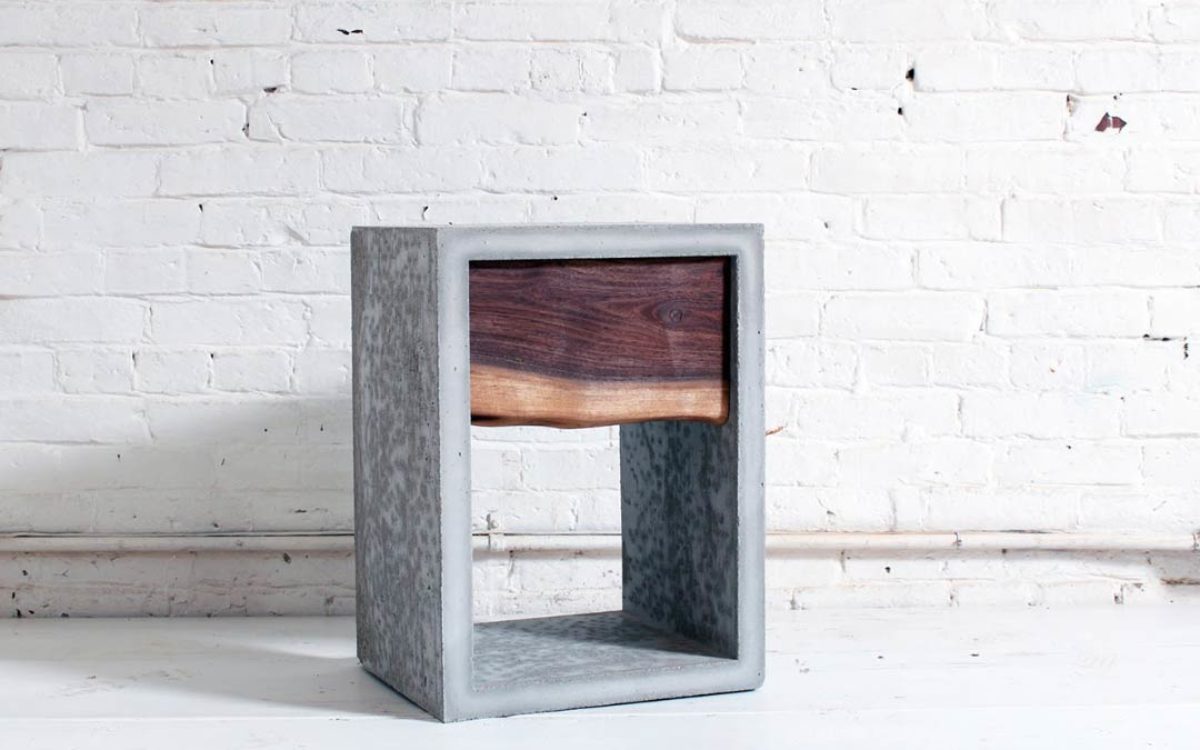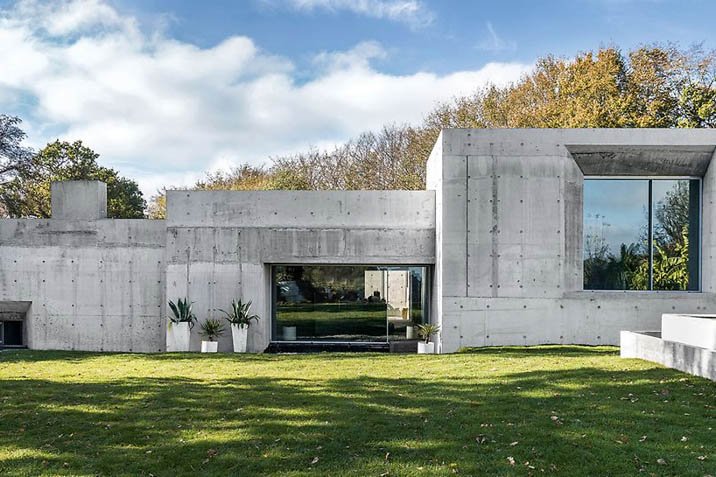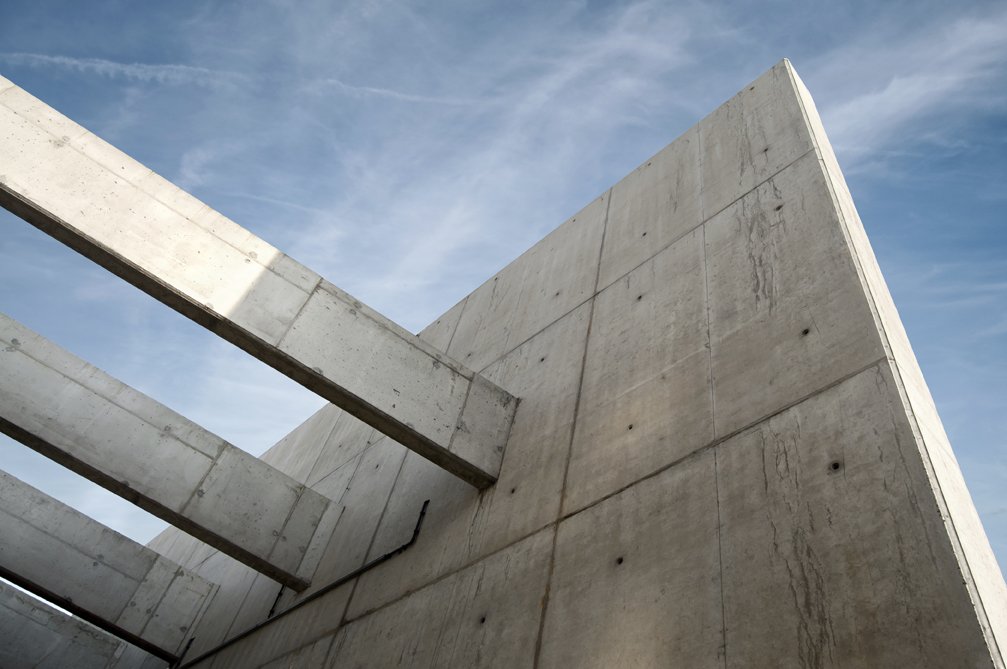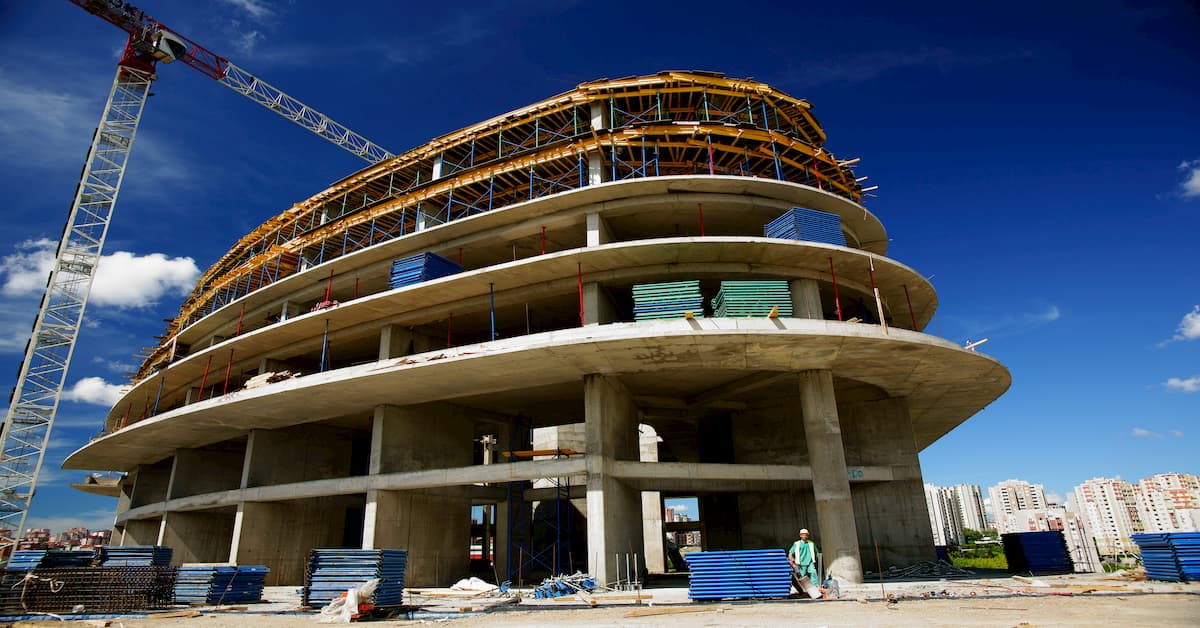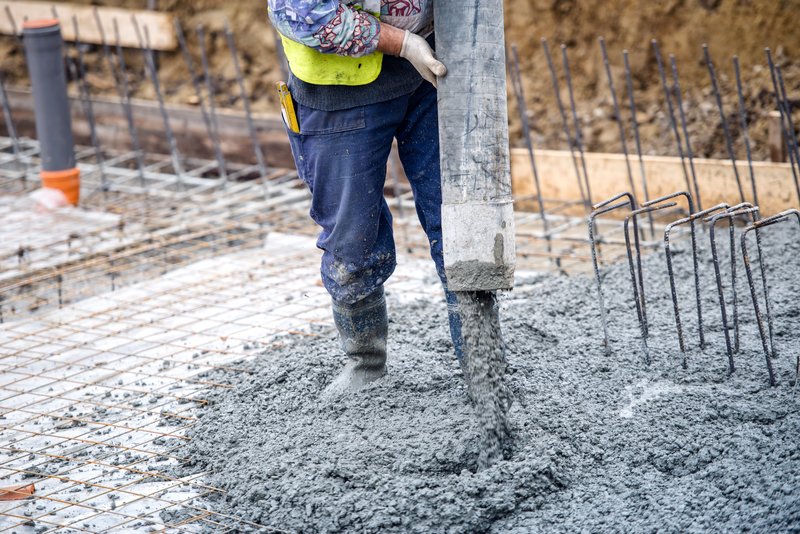DIY with Concrete: Creative Projects to Beautify Your Home on a Budget Looking to add a touch of modern charm to your home without breaking the bank? Look no further than concrete. With its affordability and versatility, concrete is the perfect material for DIY projects that can enhance your home’s aesthetic appeal. In this guide, we’ll explore some creative and budget-friendly DIY projects using concrete. Concrete Planters Concrete planters are a stylish and functional addition to any indoor or outdoor space. They add a contemporary touch to your decor while providing a home for your favorite plants. With molds readily available at most craft stores, you can easily create your own concrete planters in various shapes and sizes. Concrete Countertops Upgrade your kitchen or bathroom with sleek concrete countertops. Not only are concrete countertops durable and easy to maintain, but they also offer a modern and industrial aesthetic. With some basic tools and materials, you can pour and mold your own concrete countertops to fit your space perfectly. Concrete Wall Art Make a statement with DIY concrete wall art. Whether you opt for geometric shapes, abstract designs, or custom molds, concrete wall art adds texture and visual interest to any room. Get creative with colors, textures, and finishes to customize your wall art to Concrete Candle Holders Create ambiance in your home with DIY concrete candle holders. These stylish and minimalist accessories add a warm glow to any space. With some PVC pipes or cardboard tubes as molds, you can easily pour and mold your own concrete candle holders in various shapes and sizes. Conclusion In conclusion, DIY projects with concrete offer endless possibilities for beautifying your home on a budget. Whether you’re crafting concrete planters, countertops, wall art, or candle holders, the key is to unleash your creativity and embrace the versatility of this affordable and stylish material. With a little time and effort, you can create custom pieces that add a touch of modern elegance to your home décor. So roll up your sleeves, gather your materials, and get ready to transform your space with DIY concrete projects! Recents post concrete work sustainable DIY with Concrete: Creative Projects to Beautify Your Home on a Budget However, the quest for innovation in concrete infrastructure has taken center stage, bridging the gap between traditional methods and groundbreaking… Read More Concrete in Interior Design: Tips to Incorporate Industrial Elegance into Your Home However, the quest for innovation in concrete infrastructure has taken center stage, bridging the gap between traditional methods and groundbreaking… Read More Concrete at Home: Simple Steps to Create Decorative and Functional Elements However, the quest for innovation in concrete infrastructure has taken center stage, bridging the gap between traditional methods and groundbreaking… Read More Refresh Your Space: Fresh Ideas to Transform Your Home with Concrete However, the quest for innovation in concrete infrastructure has taken center stage, bridging the gap between traditional methods and groundbreaking… Read More Bridging the Gap: Exploring Innovations in Concrete Infrastructure However, the quest for innovation in concrete infrastructure has taken center stage, bridging the gap between traditional methods and groundbreaking… Read More Concrete Elegance: Aesthetic Approaches to Architectural Design In the realm of architectural design, concrete often conjures images of strength and durability. However, the marriage of concrete and… Read More Load More End of Content.
Concrete in Interior Design: Tips to Incorporate Industrial Elegance into Your Home
Concrete in Interior Design: Tips to Incorporate Industrial Elegance into Your Home Industrial-inspired interior design has surged in popularity in recent years, and concrete plays a central role in achieving this aesthetic. Its raw and minimalist appeal adds a touch of urban sophistication to any space. In this guide, we’ll explore some tips for incorporating concrete into your home’s interior design to achieve that sought-after industrial elegance. Embracing Minimalism At the core of industrial design is the principle of minimalism. Concrete’s clean lines and neutral tones make it an ideal material for creating a sleek and uncluttered look in your home. Embrace simplicity by using concrete as a focal point in your design, whether it’s through a statement wall, flooring, or furniture pieces. Mixing Materials To soften the harshness of concrete and add warmth to your space, consider mixing materials. Pair concrete with natural elements like wood, leather, or textiles to create a balanced and inviting atmosphere. The juxtaposition of textures adds depth and visual interest to your interior design scheme. Playing with Light and Space One of concrete’s most striking qualities is its ability to interact with light and space. Use strategically placed lighting to highlight concrete features and create dramatic shadows. Additionally, consider open floor plans and minimalist furniture to maximize the sense of space and airiness in your home. Adding Softness and Comfort While concrete is known for its industrial appeal, it’s essential to balance its hardness with elements of softness and comfort. Incorporate plush rugs, cozy throws, and soft furnishings to create a welcoming and livable environment. This juxtaposition of textures adds warmth and dimension to your interior design. Conclusion In conclusion, concrete is a versatile and captivating material that can elevate your home’s interior design to new heights of industrial elegance. By embracing minimalism, mixing materials, playing with light and space, and adding touches of softness and comfort, you can create a space that seamlessly blends urban sophistication with inviting warmth. With these tips in mind, you’re ready to embark on a journey of transforming your home into a stylish sanctuary. Recents post concrete work sustainable Concrete in Interior Design: Tips to Incorporate Industrial Elegance into Your Home However, the quest for innovation in concrete infrastructure has taken center stage, bridging the gap between traditional methods and groundbreaking… Read More Concrete at Home: Simple Steps to Create Decorative and Functional Elements However, the quest for innovation in concrete infrastructure has taken center stage, bridging the gap between traditional methods and groundbreaking… Read More Refresh Your Space: Fresh Ideas to Transform Your Home with Concrete However, the quest for innovation in concrete infrastructure has taken center stage, bridging the gap between traditional methods and groundbreaking… Read More Bridging the Gap: Exploring Innovations in Concrete Infrastructure However, the quest for innovation in concrete infrastructure has taken center stage, bridging the gap between traditional methods and groundbreaking… Read More Concrete Elegance: Aesthetic Approaches to Architectural Design In the realm of architectural design, concrete often conjures images of strength and durability. However, the marriage of concrete and… Read More Technology Trends in Modern Concrete Projects In the dynamic landscape of modern construction, the integration of cutting-edge technology has revolutionized the way we conceive and execute… Read More Load More End of Content.
Concrete at Home: Simple Steps to Create Decorative and Functional Elements
Concrete at Home: Simple Steps to Create Decorative and Functional Elements When it comes to home improvement projects, concrete is often overlooked as a viable option. However, this durable and versatile material can be used to create decorative and functional elements that enhance any living space. In this guide, we’ll explore some simple steps for incorporating concrete into your home. Choosing the Right Concrete Before you begin your concrete project, it’s important to choose the right type of concrete for the job. Consider factors such as strength, durability, and appearance to ensure that you select the best option for your specific needs. Preparing the Surface Proper surface preparation is crucial for ensuring a successful concrete project. Depending on the application, this may involve cleaning, leveling, or applying a bonding agent to the surface. Taking the time to properly prepare the surface will help ensure a strong and durable bond. Mixing and Pouring Concrete Once the surface is prepared, it’s time to mix and pour the concrete. Follow the manufacturer’s instructions carefully to ensure that you achieve the proper consistency and strength. Use a trowel or float to spread the concrete evenly and eliminate any air pockets. Finishing Touches After the concrete has been poured, it’s time to add the finishing touches. Depending on the project, this may involve smoothing the surface, adding texture, or applying a decorative finish. Take your time with this step to ensure that the final product meets your expectations. Conclusion In conclusion, concrete is a versatile and accessible material that can be used to create a wide range of decorative and functional elements for your home. By following these simple steps and taking the time to properly prepare and finish your concrete projects, you can achieve professional-quality results that enhance your living space for years to come. Recents post concrete work sustainable Concrete at Home: Simple Steps to Create Decorative and Functional Elements However, the quest for innovation in concrete infrastructure has taken center stage, bridging the gap between traditional methods and groundbreaking… Read More Refresh Your Space: Fresh Ideas to Transform Your Home with Concrete However, the quest for innovation in concrete infrastructure has taken center stage, bridging the gap between traditional methods and groundbreaking… Read More Bridging the Gap: Exploring Innovations in Concrete Infrastructure However, the quest for innovation in concrete infrastructure has taken center stage, bridging the gap between traditional methods and groundbreaking… Read More Concrete Elegance: Aesthetic Approaches to Architectural Design In the realm of architectural design, concrete often conjures images of strength and durability. However, the marriage of concrete and… Read More Technology Trends in Modern Concrete Projects In the dynamic landscape of modern construction, the integration of cutting-edge technology has revolutionized the way we conceive and execute… Read More Shaping Solid Foundations in Concrete Construction In the grand tapestry of construction, the art of formwork emerges as a pivotal chapter. It is the canvas upon… Read More Load More End of Content.
Refresh Your Space: Fresh Ideas to Transform Your Home with Concrete
Refresh Your Space: Fresh Ideas to Transform Your Home with Concrete In the realm of home design, concrete is emerging as a versatile and stylish option for creating a contemporary aesthetic. Whether you’re renovating your entire home or just looking to add a touch of modern flair, incorporating concrete elements can breathe new life into your space. Bringing Concrete Indoors When we think of concrete, we often envision outdoor spaces like driveways and patios. However, concrete can also be seamlessly integrated into interior design. From polished concrete floors to sleek countertops, there are myriad ways to introduce this durable material into your home. Creative Concrete Projects For those with a DIY spirit, concrete opens up a world of creative possibilities. Consider crafting your own concrete planters, lamps, or even furniture pieces. With a bit of imagination and some basic materials, you can create custom pieces that add character and charm to your home. Enhancing Curb Appeal Concrete isn’t just for the interior of your home; it can also enhance your home’s exterior aesthetic. Consider adding a decorative concrete walkway, driveway, or patio to boost curb appeal and create a welcoming entryway for guests. Conclusion In conclusion, concrete offers endless opportunities for refreshing and revitalizing your home. Whether you’re looking to make a bold statement with polished concrete floors or add subtle accents with concrete decor, this versatile material is sure to elevate your space and leave a lasting impression. Recents post concrete work sustainable Refresh Your Space: Fresh Ideas to Transform Your Home with Concrete However, the quest for innovation in concrete infrastructure has taken center stage, bridging the gap between traditional methods and groundbreaking… Read More Bridging the Gap: Exploring Innovations in Concrete Infrastructure However, the quest for innovation in concrete infrastructure has taken center stage, bridging the gap between traditional methods and groundbreaking… Read More Concrete Elegance: Aesthetic Approaches to Architectural Design In the realm of architectural design, concrete often conjures images of strength and durability. However, the marriage of concrete and… Read More Technology Trends in Modern Concrete Projects In the dynamic landscape of modern construction, the integration of cutting-edge technology has revolutionized the way we conceive and execute… Read More Shaping Solid Foundations in Concrete Construction In the grand tapestry of construction, the art of formwork emerges as a pivotal chapter. It is the canvas upon… Read More Concrete Reinforcement: Techniques for Safe Structures Building with concrete in extreme climates is a challenge that requires specialized knowledge and specific adaptations. Read More Load More End of Content.
Shaping Solid Foundations in Concrete Construction
Shaping Solid Foundations in Concrete Construction In the realm of construction, the artistry lies not only in the finished structure but in the meticulous groundwork laid before it. When it comes to crafting durable and robust foundations for concrete structures, the secret weapon is often hidden in plain sight — formwork. In this exploration, we delve into the intricate world of formwork, unraveling its significance in shaping solid foundations that stand the test of time. Understanding the Essence of Formwork Formwork, in simple terms, refers to the molds or frames used to shape and support concrete until it sets and gains sufficient strength. This crucial process sets the stage for the entire construction project, determining the quality and durability of the structure’s foundation. The art of formwork is, therefore, a careful blend of engineering precision and craftsmanship. The Key to Solid Foundations Creating solid foundations requires meticulous attention to detail from the very beginning. Formwork serves as the blueprint, dictating the shape and dimensions of the concrete elements. The accuracy of formwork directly influences the structural integrity of the final product, making it a cornerstone in the quest for robust foundations. Tips for Achieving Solid Bases with Formwork: Precision in Design: The journey to solid foundations commences with a well-thought-out design. Engineers and architects must collaborate to create formwork that aligns with the project’s specifications. Precision in design lays the groundwork for a sturdy and enduring foundation. Quality Materials Matter: Building solid foundations demands the use of high-quality materials for formwork. Durable woods, steel, or even innovative materials like fiberglass-reinforced plastics contribute to the longevity and stability of the formwork. Secure and Stable Installation: The installation of formwork is a critical phase. Ensuring a secure and stable setup prevents shifting or misalignment during the concrete pouring process. Attention to detail at this stage safeguards against potential issues in the foundation. Innovations in Formwork Technology: Embracing advancements in formwork technology enhances the efficiency and effectiveness of the entire construction process. Modular formwork systems and automated solutions not only save time but also elevate the precision of the foundation. Navigating Challenges for Solid Foundations While formwork is a powerful tool, challenges can arise. Adverse weather conditions, unexpected site conditions, or the need for intricate shapes may pose hurdles. However, with a proactive approach and adaptive strategies, these challenges can be overcome to ensure the solidity of the foundation. Conclusion In the grand tapestry of construction, the art of formwork emerges as a pivotal chapter. It is the canvas upon which the solidity and strength of a structure are painted. By understanding the nuances of formwork and embracing innovation, construction professionals can master the craft, creating foundations that not only support but elevate the structures they uphold. In the pursuit of solid foundations, formwork stands as a testament to the marriage of engineering expertise and artistic finesse. Recents post concrete work sustainable Shaping Solid Foundations in Concrete Construction In the grand tapestry of construction, the art of formwork emerges as a pivotal chapter. It is the canvas upon… Read More Concrete Reinforcement: Techniques for Safe Structures Building with concrete in extreme climates is a challenge that requires specialized knowledge and specific adaptations. Read More How to Prevent and Repair Concrete Damage Building with concrete in extreme climates is a challenge that requires specialized knowledge and specific adaptations. Read More Sustainable Concrete: Future and Environment Building with concrete in extreme climates is a challenge that requires specialized knowledge and specific adaptations. Read More Challenges and Solutions in Concrete Projects in Extreme Climates Building with concrete in extreme climates is a challenge that requires specialized knowledge and specific adaptations. Read More Safety in Concrete Construction: Standards and Practices This article explores essential standards and provides practical tips for safe and efficient construction. Read More
Concrete Reinforcement: Techniques for Safe Structures
Concrete Reinforcement: Techniques for Safe Structures Advanced Concrete Reinforcement Techniques: Ensuring Strong and Safe Structures In the world of modern construction, ensuring the strength and safety of concrete structures is paramount. This article focuses on advanced reinforcement techniques being used to improve the strength and durability of concrete, addressing both traditional methods and recent innovations. Traditional Steel Reinforcement The use of steel bars in concrete, known as reinforced concrete, has long been the backbone of concrete construction. Use of Reinforcing Steel Choosing the appropriate quality and size of steel bars according to structural loads. Correct placement of steel bars to ensure uniform distribution of tension. Innovations in Reinforcement Materials With technological advancements, new materials are being used to enhance the strength of concrete. Polymer and Composite Fibers Use of carbon or glass fibers to reinforce concrete, providing greater tensile strength and durability. Applications in repairs and reinforcement of existing structures. Post-Tensioning Techniques Post-tensioning is a technique that involves tensioning cables or tendons within the concrete after it has hardened, providing additional strength. Application of Post-Tensioning Used in the construction of bridges, slabs, and high-rise buildings. Benefits in terms of material efficiency and the ability to span large distances. External Reinforcement for Structural Rehabilitation External reinforcement is applied to existing structures to improve their load-bearing capacity or repair damage. Jacketing and Laminating Techniques Application of additional concrete or composite material sheets on structural elements. Used in the rehabilitation of historic buildings or structural repairs. Concrete reinforcement techniques are constantly evolving, offering innovative and effective solutions for the challenges of modern construction. Through the application of these advanced techniques, engineers and builders can ensure that concrete structures are not only strong but also durable and of high quality. Recents post concrete work sustainable Concrete Reinforcement: Techniques for Safe Structures Building with concrete in extreme climates is a challenge that requires specialized knowledge and specific adaptations. Read More How to Prevent and Repair Concrete Damage Building with concrete in extreme climates is a challenge that requires specialized knowledge and specific adaptations. Read More Sustainable Concrete: Future and Environment Building with concrete in extreme climates is a challenge that requires specialized knowledge and specific adaptations. Read More Challenges and Solutions in Concrete Projects in Extreme Climates Building with concrete in extreme climates is a challenge that requires specialized knowledge and specific adaptations. Read More Safety in Concrete Construction: Standards and Practices This article explores essential standards and provides practical tips for safe and efficient construction. Read More
Sustainable Concrete: Future and Environment
Sustainable Concrete: Future and Environment Concrete, being one of the most widely used construction materials in the world, plays a crucial role in sustainability and environmental protection. This article focuses on the innovations and practices that are shaping the future of concrete towards a greener and more sustainable approach. Innovations in Sustainable Concrete New technologies and approaches are transforming how concrete is produced and used, reducing its environmental impact. Low Carbon Concrete Development of concrete mixes that reduce CO2 emissions during their production. Use of alternative materials, such as fly ash or slag, to replace part of Portland cement. Recycled Concrete Use of recycled aggregates from demolished concrete in new mixes. Promotion of recycling practices in the industry to reduce the use of virgin resources and waste generation. Environmental Impact of Concrete Understanding the environmental impact of concrete is crucial for developing effective sustainability strategies. Carbon Footprint Analysis of the carbon footprint of concrete from its production to its demolition. Strategies to reduce emissions at each stage of the concrete life cycle. Resource Conservation Techniques to optimize the use of water and raw materials in concrete production. Promotion of energy efficiency in concrete production plants. Challenges and Solutions in Concrete Sustainability Despite advances, there are significant challenges that must be overcome to achieve a truly sustainable concrete industry. Balance Between Durability and Sustainability Development of concretes that are not only environmentally sustainable but also durable and resistant. Ongoing research to improve the properties of concrete while maintaining its ecological profile. Education and Adoption of Sustainable Practices Promotion of awareness about sustainable practices in the construction industry. Collaboration between governments, industries, and academics to promote regulations and policies that support sustainability. The future of concrete is promising in terms of sustainability and respect for the environment. Through continuous innovation, the adoption of greener practices, and collaboration at all levels, we can ensure that this essential material remains a cornerstone of construction, but in a way that protects our planet for future generations. Recents post concrete work sustainable Sustainable Concrete: Future and Environment Building with concrete in extreme climates is a challenge that requires specialized knowledge and specific adaptations. Read More Challenges and Solutions in Concrete Projects in Extreme Climates Building with concrete in extreme climates is a challenge that requires specialized knowledge and specific adaptations. Read More Safety in Concrete Construction: Standards and Practices This article explores essential standards and provides practical tips for safe and efficient construction. Read More
Challenges and Solutions in Concrete Projects in Extreme Climates
Challenges and Solutions in Concrete Projects in Extreme Climates Constructing with concrete in extreme climates presents unique challenges that require special consideration. From sub-zero temperatures to extreme heat, these environments can significantly affect the quality and durability of concrete. This article explores the most common challenges and offers practical solutions to ensure success under such conditions. Facing Extreme Cold Construction in cold climates can cause concrete to freeze before it reaches its maximum strength, leading to structural problems. Solutions for Cold Use anti-freeze additives to help the concrete cure properly. Employ heating techniques, such as thermal blankets or heaters, to maintain an adequate temperature during curing. Select concrete mixes designed for low temperatures. Handling Extreme Heat In hot climates, concrete can dry out too quickly, resulting in inadequate curing and potential cracking. Solutions for Heat Use heat-reducing additives or low heat of hydration concrete mixes. Schedule pouring during the cooler hours of the day. Apply curing techniques like frequent watering to maintain moisture. Construction in Wet and Flood-Prone Areas Excessive moisture can affect the integrity of concrete and encourage the corrosion of reinforcing steel. Solutions for Moisture Use waterproof concretes or hydrophobic additives. Design effective drainage around structures to prevent water accumulation. Use galvanized or coated reinforcing steel to resist corrosion. Working in Seismic Zones Areas prone to earthquakes require special consideration in the design and construction of concrete structures. Solutions for Seismic Zones Design structures with greater flexibility and resistance to deformation. Use reinforcement techniques such as steel mesh or polymer fibers. Strictly follow seismic construction regulations. Building with concrete in extreme climates is a challenge that requires specialized knowledge and specific adaptations. By understanding these challenges and applying effective solutions, contractors can ensure the longevity and safety of their structures in any climatic condition. Recents post Challenges and Solutions in Concrete Projects in Extreme Climates Building with concrete in extreme climates is a challenge that requires specialized knowledge and specific adaptations. Read More Safety in Concrete Construction: Standards and Practices This article explores essential standards and provides practical tips for safe and efficient construction. Read More


